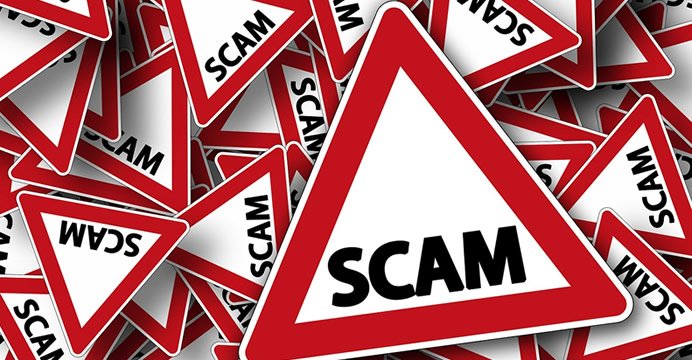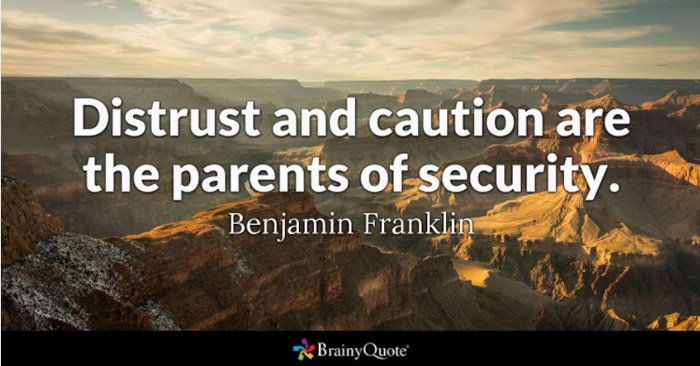Unfortunately, cryptocurrency scam websites are not an exception anymore. Play it safe, always check for the three red flags you find below.

Crypto Scams
I took my first steps into the cryptocurrency world about 16 months ago. And I admit: I've been scammed. Not once, not twice, but loads of times. I don't even want to add up all the amounts of money I lost because of ponzi schemes like Bitcoin doublers, fake investment programs and other dubious sites.
My only excuse: I was new, had no experience and was pretty naive - all of which made me the perfect victim for scammers.
There Are More Scam Websites Than You Can Imagine
Believe me, there are loads of sites out there that want you to believe they're legit, so they can take your cryptos and then disappear. More than you can ever imagine.
Scammers deceive you with well-designed websites that look legit and make offers that are so good they are hard to resist. It's only when you take a closer look - and know what to look for - that they can be identified as scammers.
Fortunately, I've learned my lesson, and it has been a while since I fell for a scam. I'm not saying I will never be scammed again, but I try to minimize the risk by following 3 simple pieces of advice.
Those 3 so called 'red flags' have helped me to identify scam sites and saved me from losing even more money than I already did, so I thought I'd pass them on so I can prevent scammers to victimize you too.

Image Source
How To Avoid Getting Scammed
Below, you'll find 3 tips that you need to be aware of if you want to protect yourself against scammers.

Let's face it: if you're into cryptocurrency, you're here to make money. You're always on the lookout for the best exchange rate or the highest return on your investment.
If you take a look around you'll notice that most 'trusted' website are all offering different rates, but still stay in the same league. If you stumble upon a site that offers you exchange rates or returns that are far higher or lower than the other sites, you need to be careful.
Take into consideration it is a lot safer to use a trusted and established website with rates or fees that are a somewhat higher, than to go for the extremely profitable deal with an unknown website which could turn out to be a scam.

SSL stands for 'Secure Sockets Layer'. You can see if a site has an SSL certificate by looking at the URL. If it says 'http://' there's no SSL certificate, if it says 'https://' there is. A secure site often displays a (green) padlock or a 'secure' message.

Some sites have the 'https://', but don't have the (green) padlock. This means there is some kind of a security issue, so you'd better be careful.
Scam sites disappear as fast as they appear. Once they're identified or their scam system comes to an end, the owners simply purchase another domain name, transfer the files and start all over again.
Unfortunately, getting an SSL certificate (even for free) is pretty easy these days, so you can never be 100% sure.

Ponzi schemes are very common in the world of cryptocurrency.
A Ponzi scheme (/ˈpɒn.zi/; also a Ponzi game)[1] is a fraudulent investment operation where the operator generates returns for older investors through revenue paid by new investors, rather than from legitimate business activities or profit of financial trading. Operators of Ponzi schemes can be either individuals or corporations, and grab the attention of new investors by offering short-term returns that are either abnormally high or unusually consistent.
Source
A good example of a ponzi scheme are the so called 'Bitcoin Doublers', which promise you 200% return after 12 or 24 hours. Sites like those always have a very good advertising campaign:after all, they need to attract as many investors as possible.
Brand new sites pay out to the first investors using the money of people who invest at a later time. They build up trust, since those first investors write positive reviews and promote the site to their peers.
People give it a try at first, using small amounts and when they receive their 200% they're reinvesting more money. As long as the ponzi website attracts enough new users who are willing to invest enough money to pay out the previous investors, they can stay alive. There's always a point when the incoming money stream isn't big enough anymore to cover the payouts, so the site just disappears and people are left with nothing.
More Red Flags
Of course there are many more red flags. Bad spelling and grammar, lack of information on the 'Contact' page, over-abundance of ads, strong dependency on affiliates and commissions,... just to name a few.
My point being: scams are everywhere, so you need to pay attention to every single step you make and do your homework before you invest, or your money could be gone forever. And follow your gut feeling: if you get the sense that something might be wrong, simply stay away!
If you like this post, feel free to follow me, upvote or re-steem it :-)
Follow my updates by subscribing to my RSS feed through a feed reader HERE
or
Receive notifications of new posts in your mailbox by subscribing HERE
More Posts You Might Like:
Having A 'Diversified Portfolio', What Does That Mean To You?
I Can't Vote For 45 Hours! Don't Let This Happen To You!
From The Deep, Dark Dungeons Of My Soul. I Stepped Back Into The Light
Tutorial: How To Reclaim The SP You Delegated To Minnow Support Project
